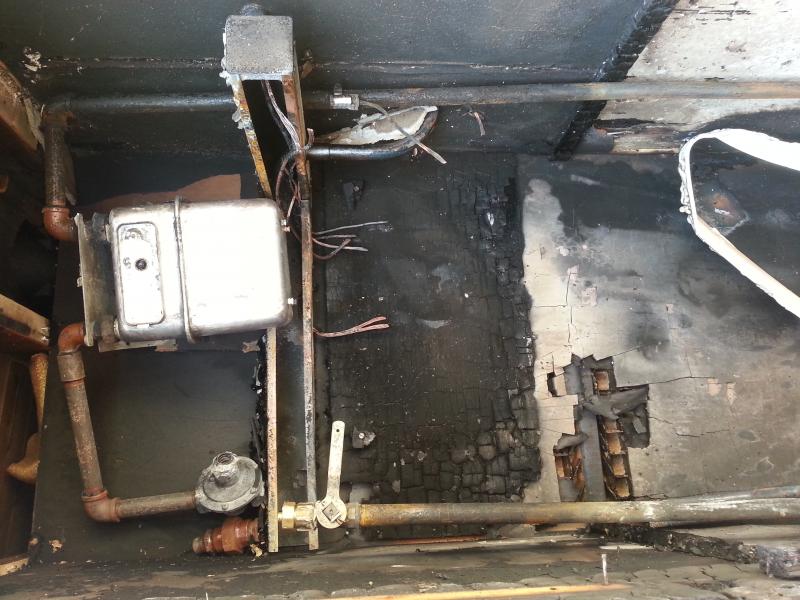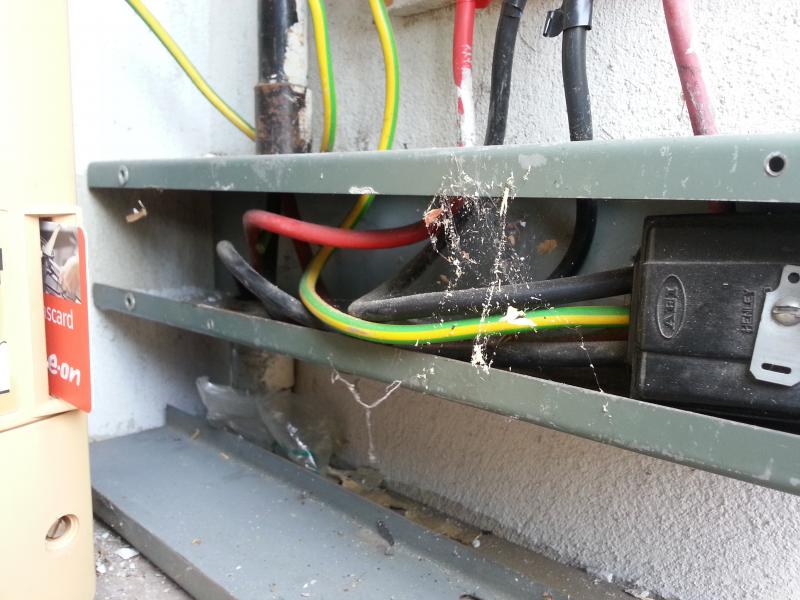I agree with your view that the OP is mixing things up.
My recent experience with DNO's may explain his position.
I had a rewire job that required the movement of the meter and suppliers cable from an internal kitchen wall which was being demolished.
The TNCS supply came into the house via overhead cable.
The DNO engineer came out and we discussed our options and eventually agreed on the following - with clear and specific responsibilities.
A location on the outside wall was identified for the DNO's incoming supply.
The DNO required a suitable meter cabinet be installed.
They would run their cables to the new cabinet and terminate at the 100Amp fuse - the meter supplier would then connect up the meter and leave a 100amp dual pole switch. The Ze was recorded on the inside of the cabinet.
They also specified the size of the customer side cable should no less than 25mm ²
The initial planned location of the CU placed it at 5m from the meter - this was unacceptable to the DNO and they insisted that if this was to be the case then they required I should install an additional protective device at the nearest point to the supply inside the customer’s premises, as specified in the current IEE Wiring Regulations.
In the end I managed to fit the Consumer Unit within the 3 metre distance and the additional protection was not needed.
It sounds to me that the OP has misheard the requirements of the DNO:
They are solely responsible for the cable up to an including the main fuse and in my case the meter tails up to the DP isolator.
If I understand what the OP is saying then he is unable to connect the CU within the 3m rule and this is why the additional protection is required.
Subject to the above highlighted requirement - the additional protection is the responsibility of the consumer/electrician.
The DNO's only requirement is that the additional protection(AP) is in place, the meter tails are connected from the CU to the AP and from the AP to the meter cabinet and dead tested with the results available for inspection.
Potential voltage drop aside there is no specific need for SWA - the DNO cannot stipulate that for inside the customers premises -though they do stipulate the cable size at the meter must be at least 25mm ² and the earth 16mm ² which of course is already published in the BGB.
http://www.northernpowergrid.com/som_download.cfm?t=media:documentmedia&i=1122&p=file
My recent experience with DNO's may explain his position.
I had a rewire job that required the movement of the meter and suppliers cable from an internal kitchen wall which was being demolished.
The TNCS supply came into the house via overhead cable.
The DNO engineer came out and we discussed our options and eventually agreed on the following - with clear and specific responsibilities.
A location on the outside wall was identified for the DNO's incoming supply.
The DNO required a suitable meter cabinet be installed.
They would run their cables to the new cabinet and terminate at the 100Amp fuse - the meter supplier would then connect up the meter and leave a 100amp dual pole switch. The Ze was recorded on the inside of the cabinet.
They also specified the size of the customer side cable should no less than 25mm ²
The initial planned location of the CU placed it at 5m from the meter - this was unacceptable to the DNO and they insisted that if this was to be the case then they required I should install an additional protective device at the nearest point to the supply inside the customer’s premises, as specified in the current IEE Wiring Regulations.
In the end I managed to fit the Consumer Unit within the 3 metre distance and the additional protection was not needed.
It sounds to me that the OP has misheard the requirements of the DNO:
They are solely responsible for the cable up to an including the main fuse and in my case the meter tails up to the DP isolator.
If I understand what the OP is saying then he is unable to connect the CU within the 3m rule and this is why the additional protection is required.
Subject to the above highlighted requirement - the additional protection is the responsibility of the consumer/electrician.
The DNO's only requirement is that the additional protection(AP) is in place, the meter tails are connected from the CU to the AP and from the AP to the meter cabinet and dead tested with the results available for inspection.
Potential voltage drop aside there is no specific need for SWA - the DNO cannot stipulate that for inside the customers premises -though they do stipulate the cable size at the meter must be at least 25mm ² and the earth 16mm ² which of course is already published in the BGB.
http://www.northernpowergrid.com/som_download.cfm?t=media:documentmedia&i=1122&p=file



